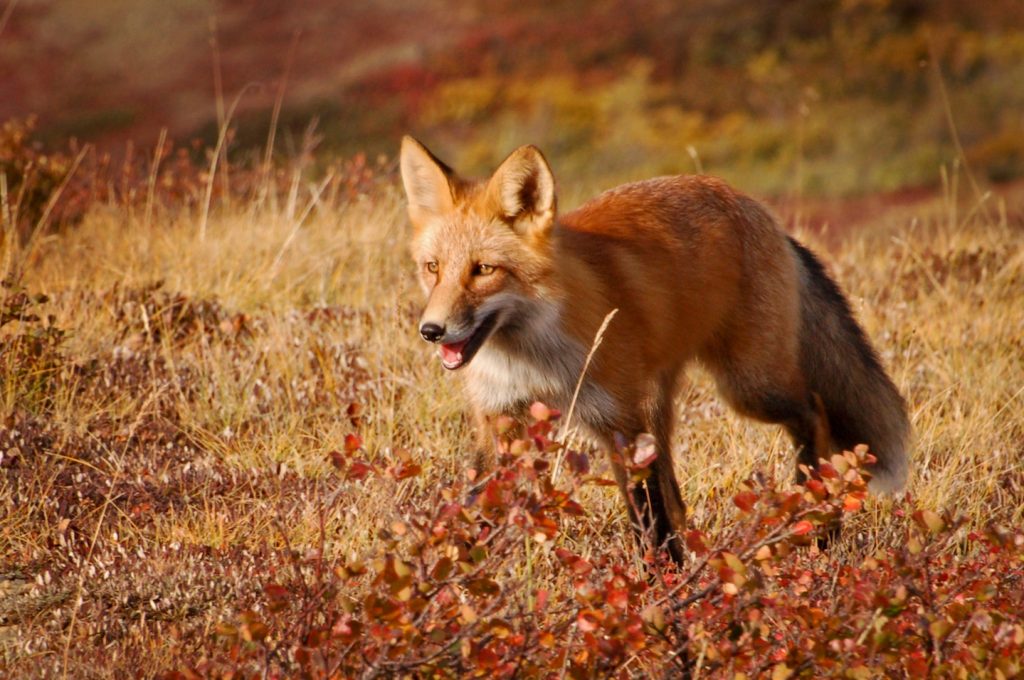
Photo: Sheila Newenham
Learn more about red foxes in Illinois in OutdoorIllinois Journal:
Red foxes help control small mammal and rabbit populations.
Red foxes belong to the Canidae family. They are small canids, approximately three feet in length including the tail, and typically weighing 7 to 18 pounds.
Red foxes are the only mammals in Illinois with a coat of rusty red fur. The fur on the outer ears, legs, and feet is dark brown to blackish. The cheeks, throat, underside, and tip of the tail are white.
There are three color phases in addition to the red phase. The melanistic phase is black; the silver phase is black with white tips; and the cross phase is red with black across the shoulders and back. In Illinois, these color phases are rare in the wild.
Red foxes have five toes on the front feet and four toes on the rear feet.
The tracks of a fox are similar to those of a small coyote or dog. Like coyote tracks, fox tracks tend to run in a straight line.
Fox droppings are similar to coyote droppings but smaller. The appearance depends upon the fox’s diet and may include bone, fur, feathers or seeds.
Red foxes can be found throughout Illinois but are less common in the southern part of the state. In good habitat, it is not uncommon to find three to four red foxes per square mile.
Researchers in Illinois have found that as coyote populations continue to increase, red foxes are moving to urban areas to avoid competing against or being preyed upon by coyotes.
Red foxes are nocturnal (active at night). They are often seen in the early morning or late evening while they are out hunting.
During the summer months red foxes live in family groups consisting of a male, a female, the current year’s young, and sometimes a female from the previous year’s litter. Red foxes are typically solitary in the fall and winter.
Red foxes help control small mammal and rabbit populations.
Red foxes can be carriers of rabies, coccidiosis, and sarcoptic mange. Rabies can be transmitted to humans and is generally fatal if not treated quickly. Coccidiosis is an intestinal disease caused by various species of protozoan. Some species cause infections that result in mild symptoms such as diarrhea, but other infections are highly virulent and can be fatal. The disease is transmitted through contact with soil or water that has been contaminated by feces.
Sarcoptic mange is highly infectious and is caused by burrowing mites. Sarcoptic mange can be transmitted to both people and pets in close contact with an infected fox. People are not a suitable host for the mite, and the infection will clear on its own, though the infected skin may be itchy. Infected pets can be treated with medications prescribed by a veterinarian.
Foxes are generalists able to use a variety of habitats. They can be found in forest edges, grasslands, agricultural areas, and urban areas. They often sleep above ground but use a den for raising young and for shelter during inclement weather. Red foxes sometimes dig their own burrows, but often they use abandoned woodchuck or badger dens.
Red foxes are monogamous, and both sexes help care for the young, called kits. Breeding takes place in January through early February. Gestation is 49 to 56 days, and the kits are born in late March to April.
Red foxes have one litter of four to ten kits each year. The kits have gray fur and their eyes open when they are about a week and a half old. Between their third and fifth week the kits begin coming to the den opening to receive meat from the adults. They are weaned by the time they are two months old and develop a sandy-colored coat during this time. By the end of June they will have developed their adult coat. Kits go on hunting trips with the adults during the summer months and most disperse to new areas by the fall. Female offspring may stay on with the adults another year to help provide for the next year’s litter.
Red foxes live three to seven years. Hawks, owls, and coyotes often take kits. Coyotes will kill adult foxes to reduce food competition in their territories. Outbreaks of sarcoptic mange occasionally cause major reductions in the fox population. Vehicles are another major source of mortality for red foxes.
Red foxes sometimes take poultry and can cause a nuisance when they burrow under buildings.
Control rabbit and small mammal populations to reduce the likelihood that a fox will use your property.
To protect poultry, make sure that fences are secure. Wire fencing should be buried at least 12 to 24 inches below ground to prevent foxes from digging underneath the fence. Wire mesh fences should have openings less than three inches to prevent foxes from squeezing through the fence. Since foxes are good climbers, it may be necessary to add a wire roof to keep determined foxes out. Providing a shed or other enclosure will help protect poultry. All doors or other openings should be shut at night. Predation of poultry occurs most frequently during late spring and summer when adults are provisioning their young.
There are currently no approved repellents for foxes in Illinois.
Frightening devices are typically ineffective at deterring foxes.
If a fox is taking poultry or causing other problems, it may be trapped and removed if a permit has been issued. If you want to hire someone to remove the fox for a fee, contact a nuisance wildlife control operator. If you want to trap the animal yourself, you will need a nuisance animal removal permit issued by an Illinois Department of Natural Resources district wildlife biologist. The biologist can provide information on options for resolving problems with red foxes.
The IDNR Furbearers page provides more information about hunting and trapping Furbearers. The Illinois Trapper Education Manual provides guidance on the best management practices for trapping. Trap size recommendations for red foxes are found on page 90; Trapper Education Manual.
Current hunting and trapping seasons can be found in th Illinois Digest of Hunting and Trapping Regulations or in the Legal Status section below.
Recreational fur-trapping (and hunting when and where allowed) is the preferred method to deal with nuisance furbearer issues. Trapping can help control the local population of animals and, in some cases, reduce the number of nuisance complaints and the damage that some species can cause. The Illinois Department of Natural Resources offers a lengthy trapping season (3 months, in some cases 4.5 months). Legal trapping can occur 100 yards from an occupied dwelling without permission of the occupants, closer with permission as long as there are no municipal ordinances that prohibit trapping.
In Illinois, red foxes are protected as Furbearers. If a fox in an urban area is causing a problem, it may be trapped and removed if a nuisance animal removal permit is issued by an IDNR district wildlife biologist. In rural areas, a trapping license is needed to harvest a red fox. Red foxes may be hunted or trapped mid-November through mid-February. There is no limit to the number of red foxes an individual with a trapping license may take during the legal season. The Illinois Digest of Hunting and Trapping Regulations provides full hunting and trapping season dates and regulations.
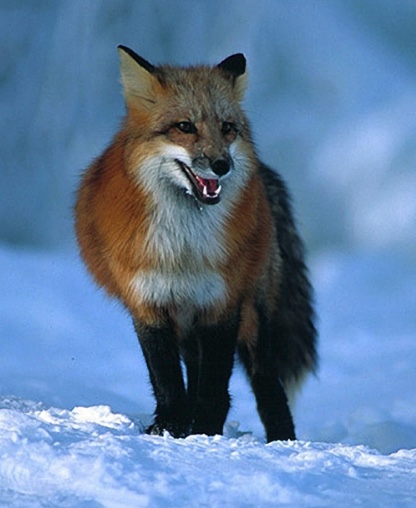
Photo: Bob Coury, Painet Inc., IDNR image library
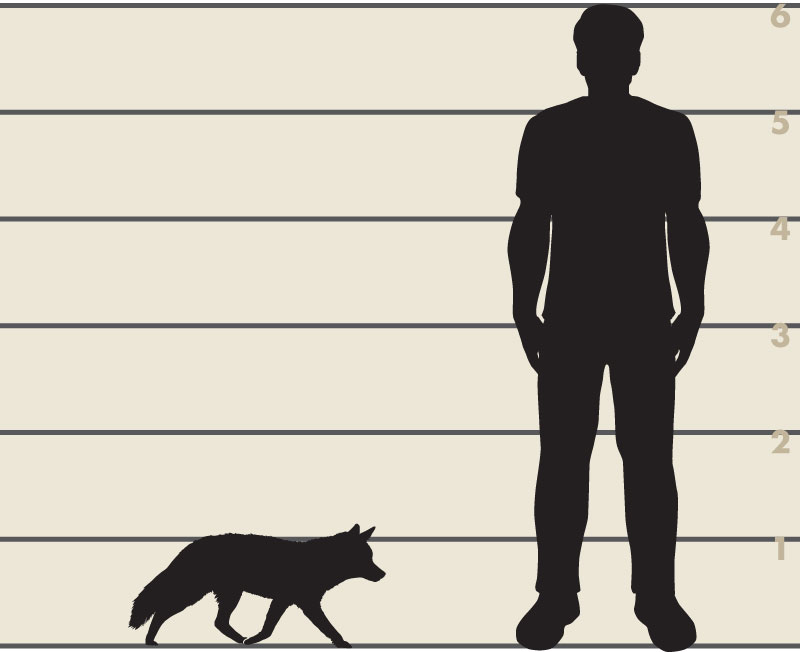
Illustrator: Lynn Smith
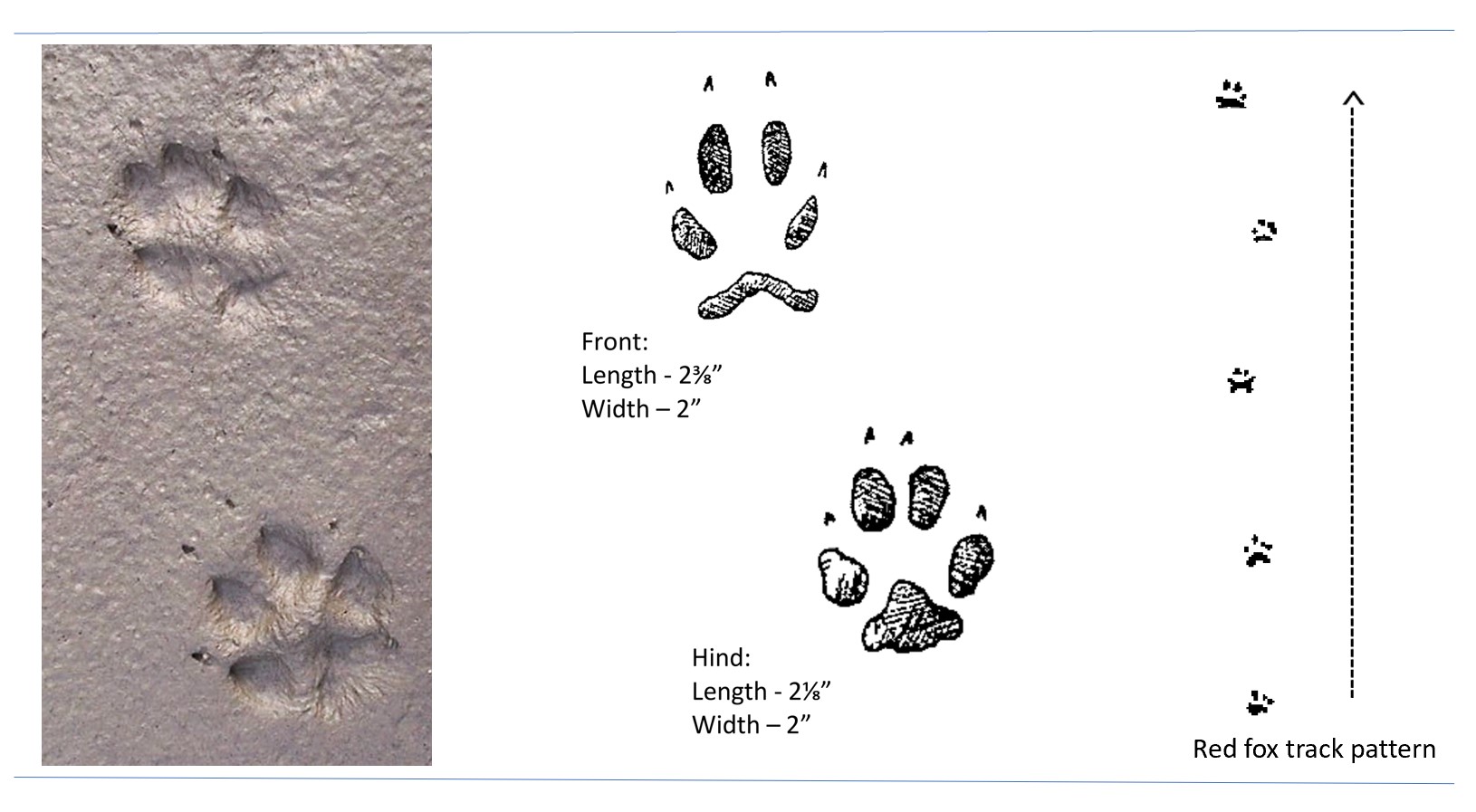
Photo: Terry Kem and Illustrations: Dan Goodman
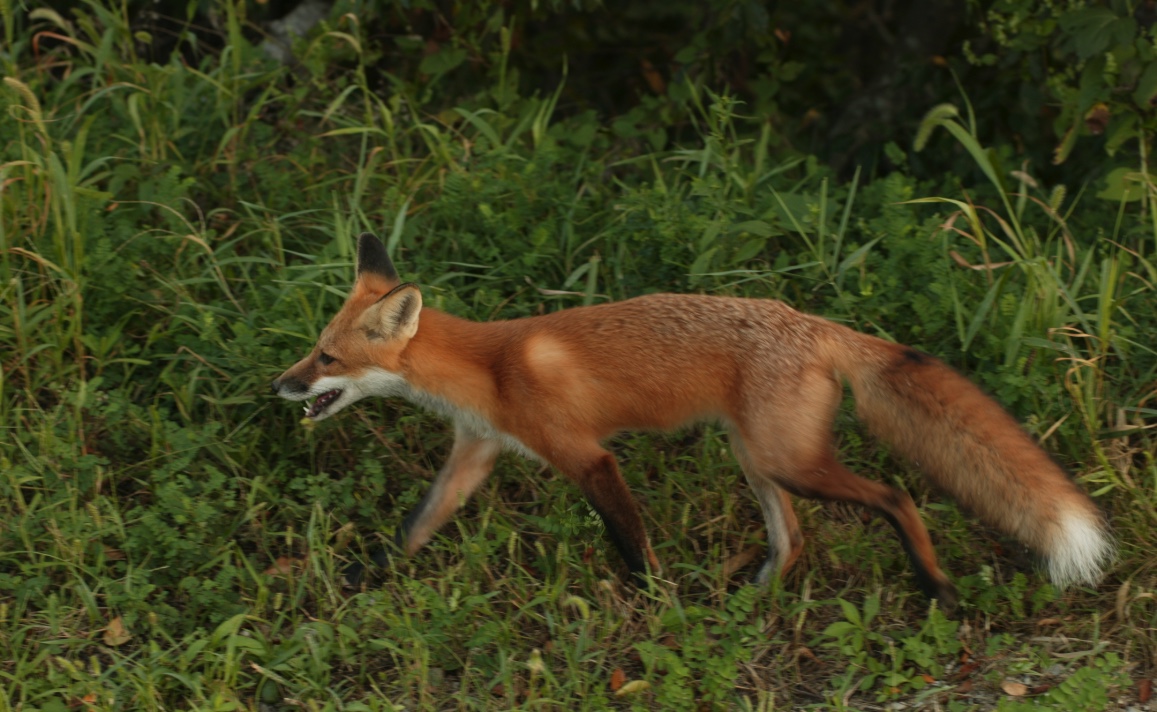
Photo: Adele Hodde, IDNR
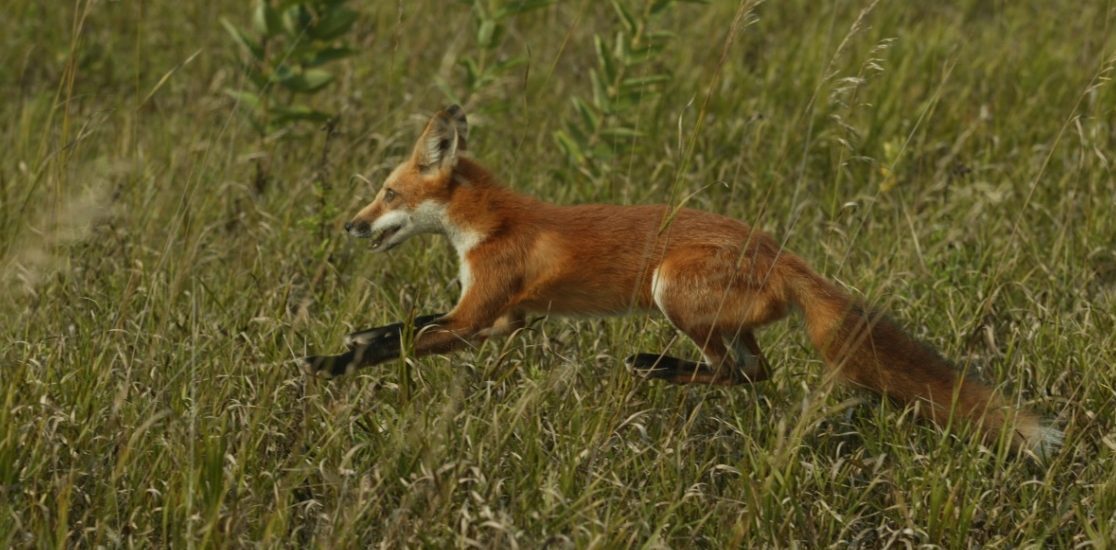
Photo: Willowbrook Wildlife Center
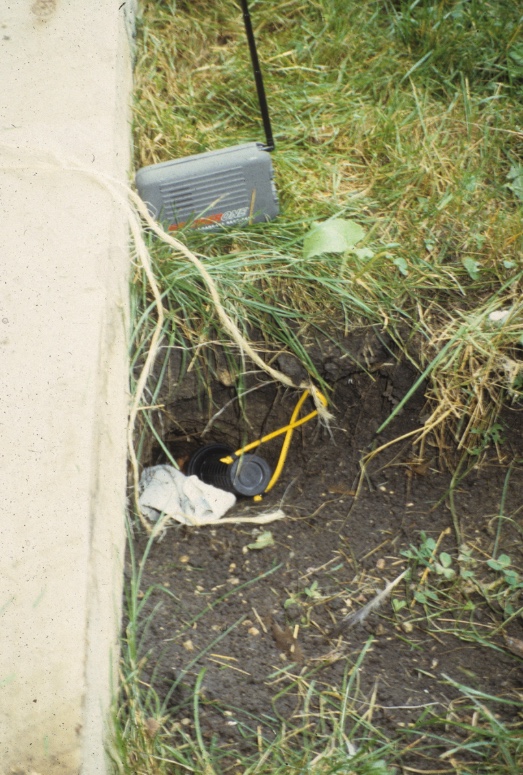
Photo: Willowbrook Wildlife Center
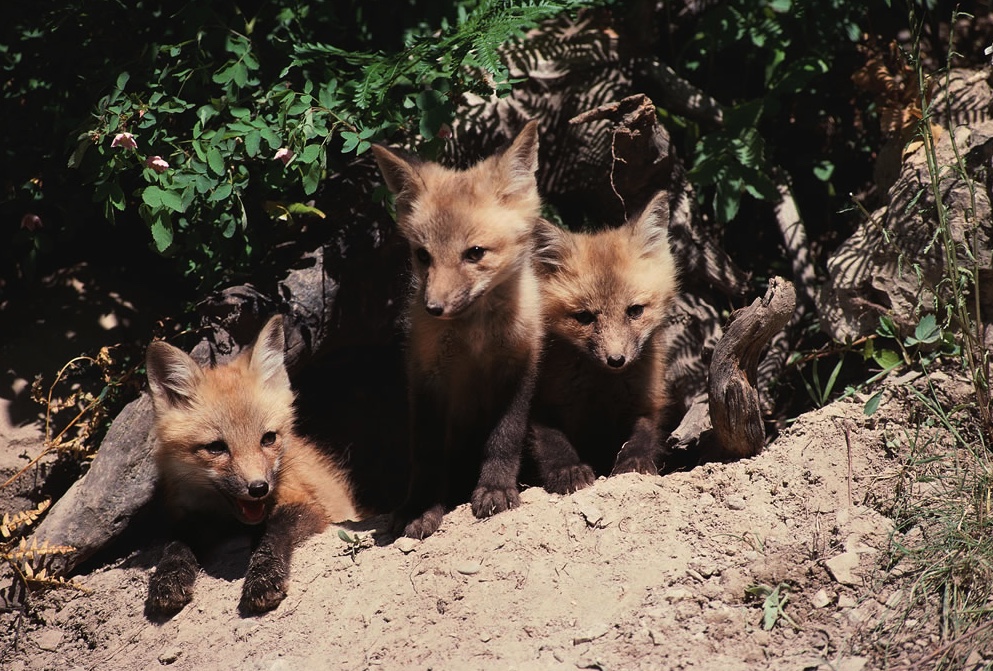
Photo: Tom Brakefield
The Wildlife Illinois website was authorized by the Illinois Department of Natural Resources (IDNR) in partial fulfillment of project W-147-T. The website was developed by the National Great Rivers Research and Education Center, 2wav, and the IDNR in partnership with the United States Department of Agriculture Animal and Plant Health Inspection Service Wildlife Services and University of Illinois Extension to provide research-based information about how to coexist with Illinois wildlife.